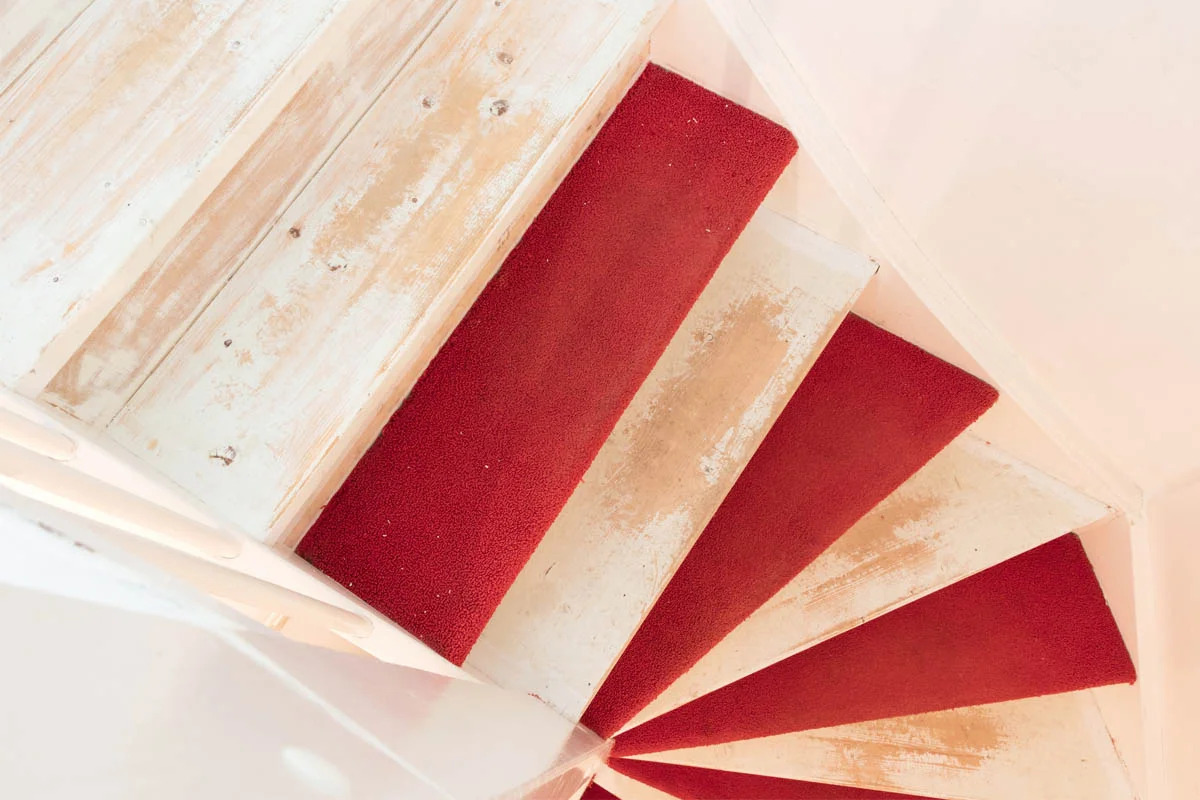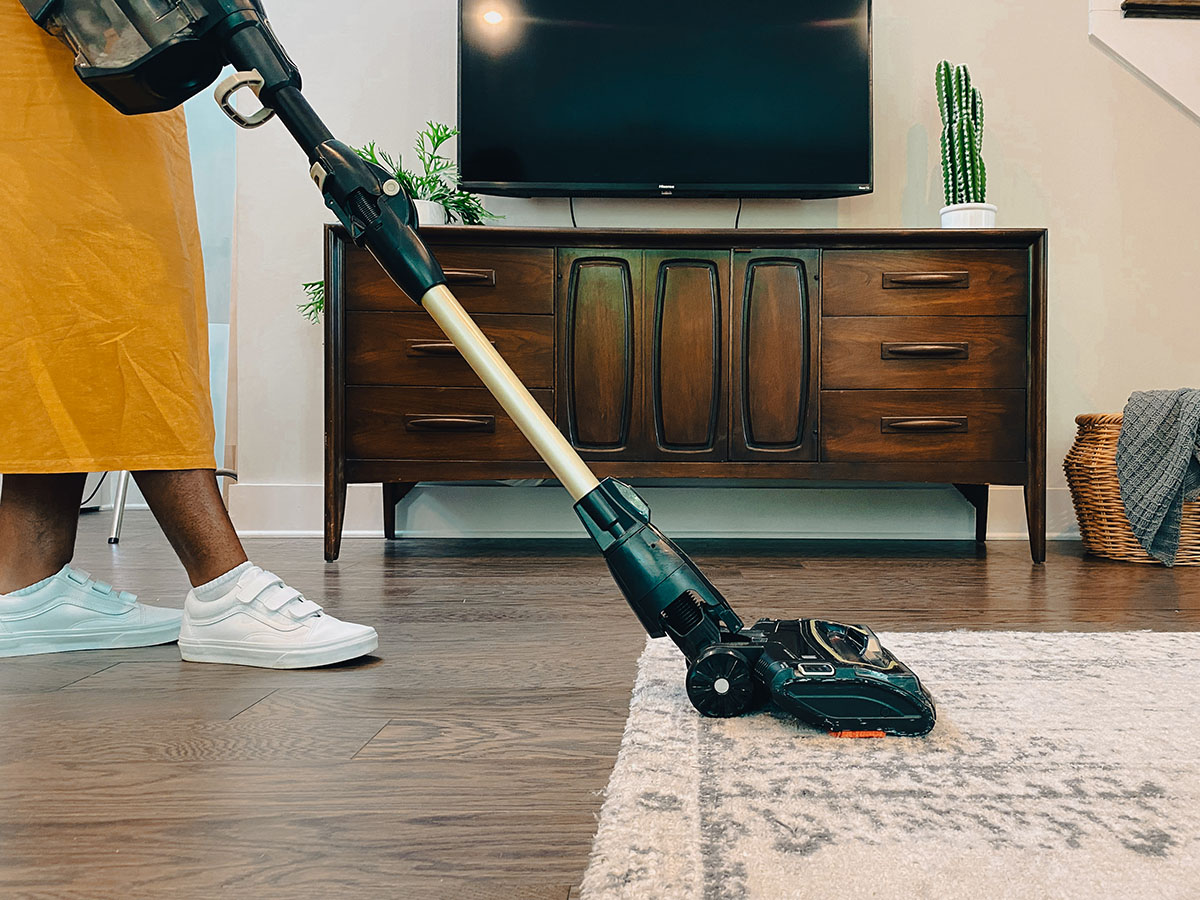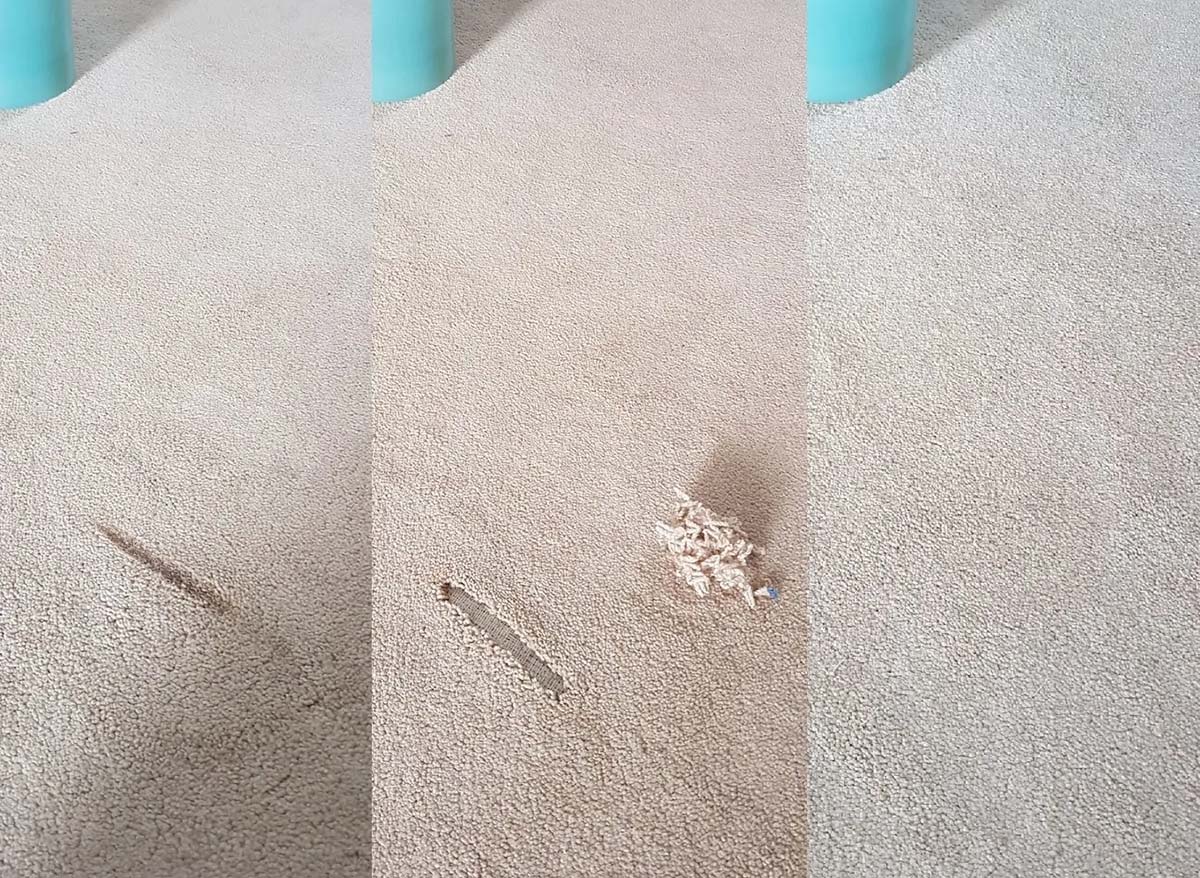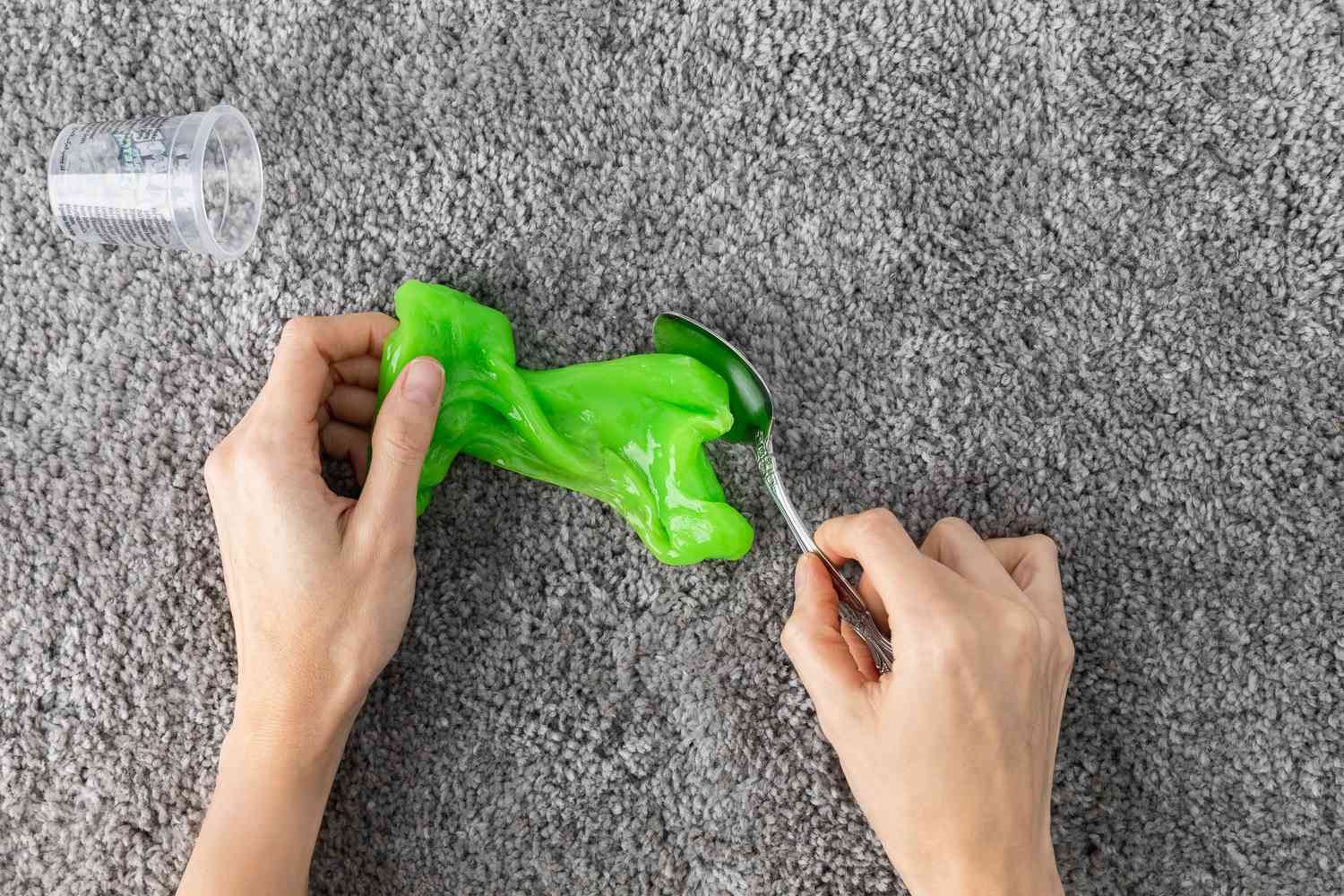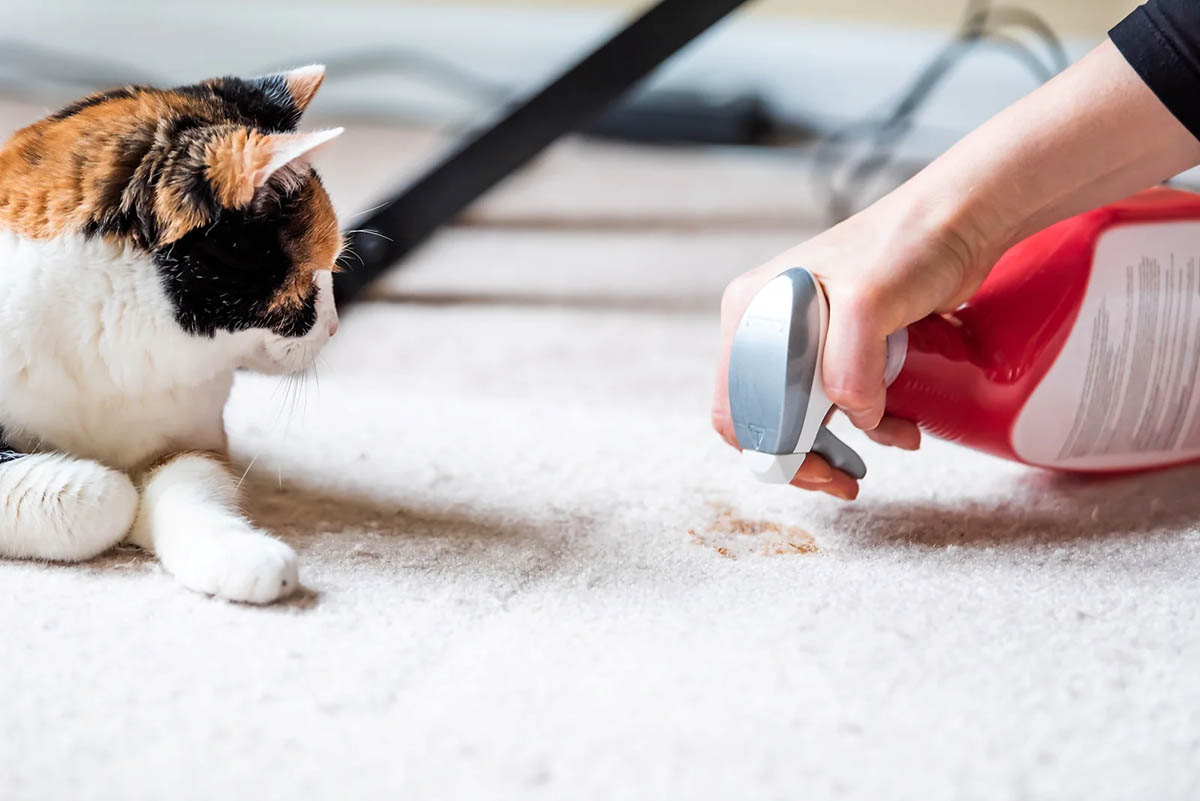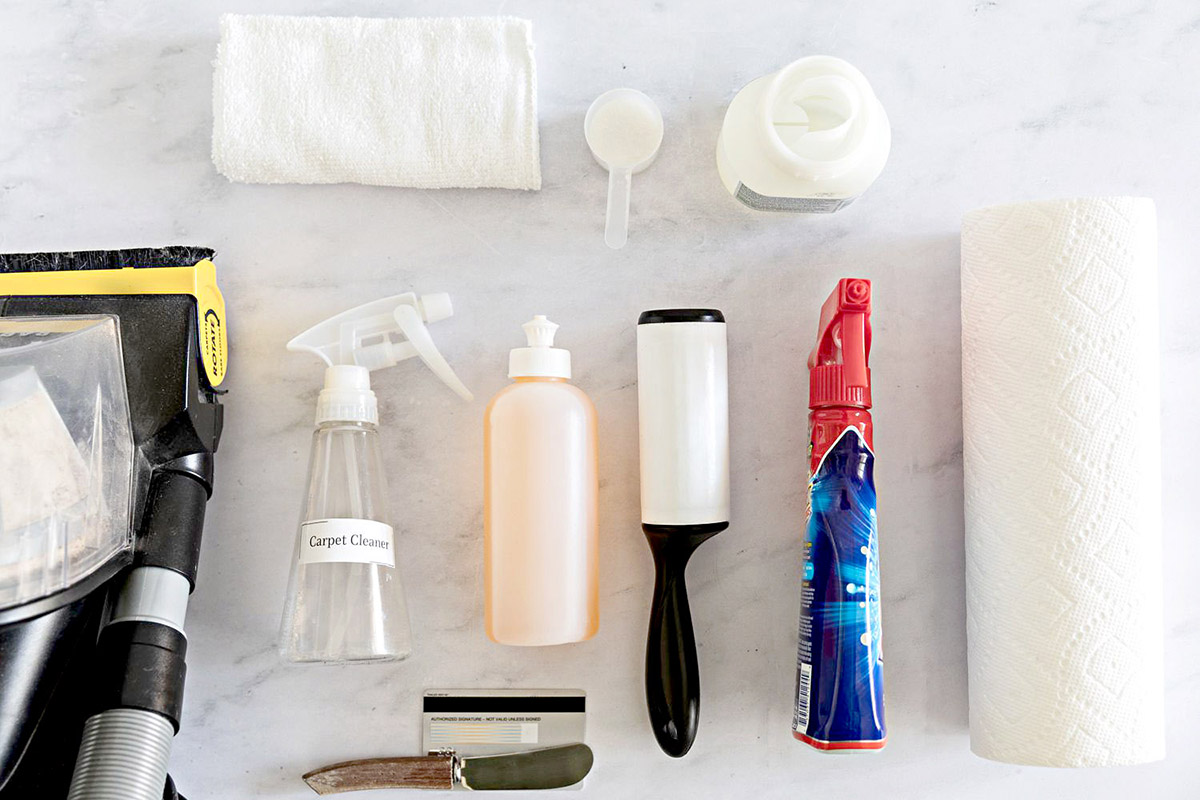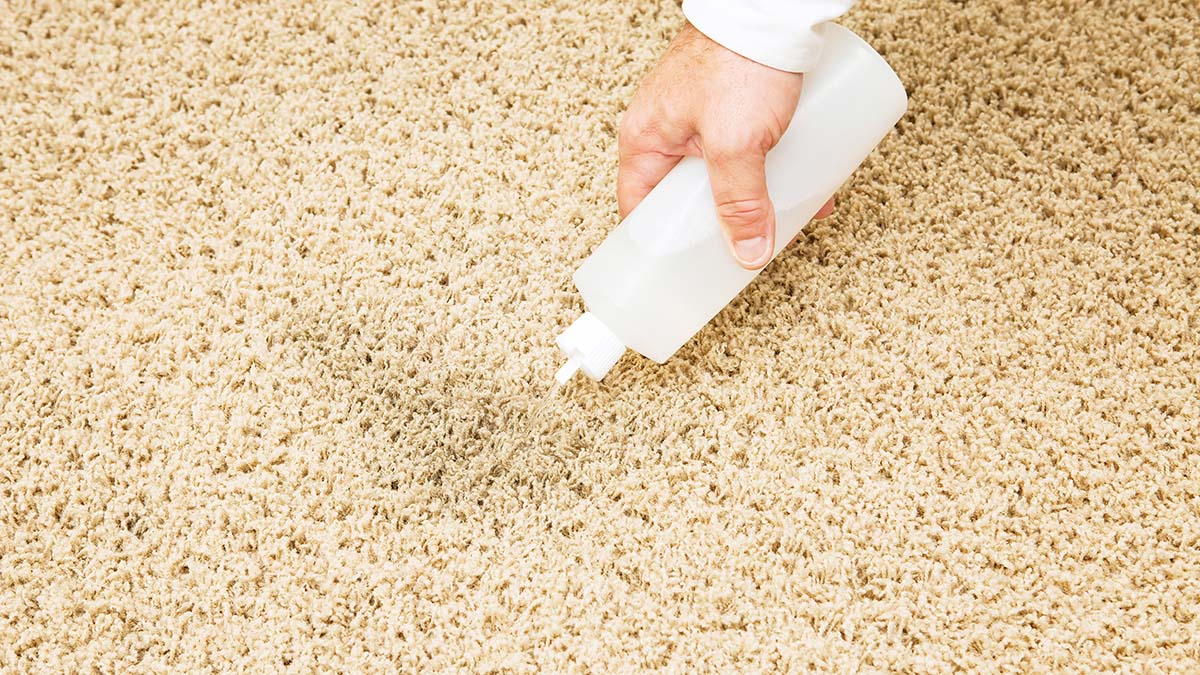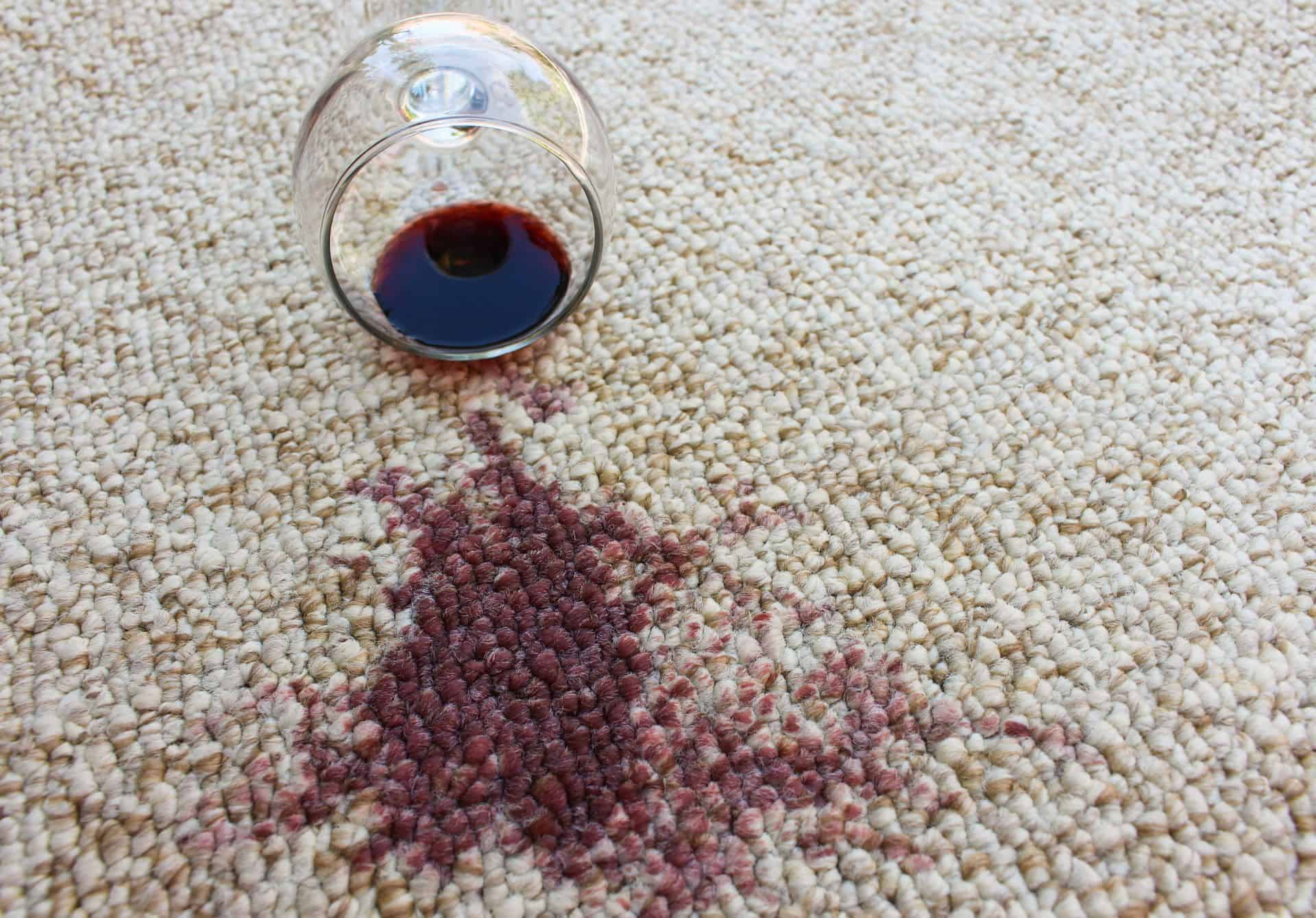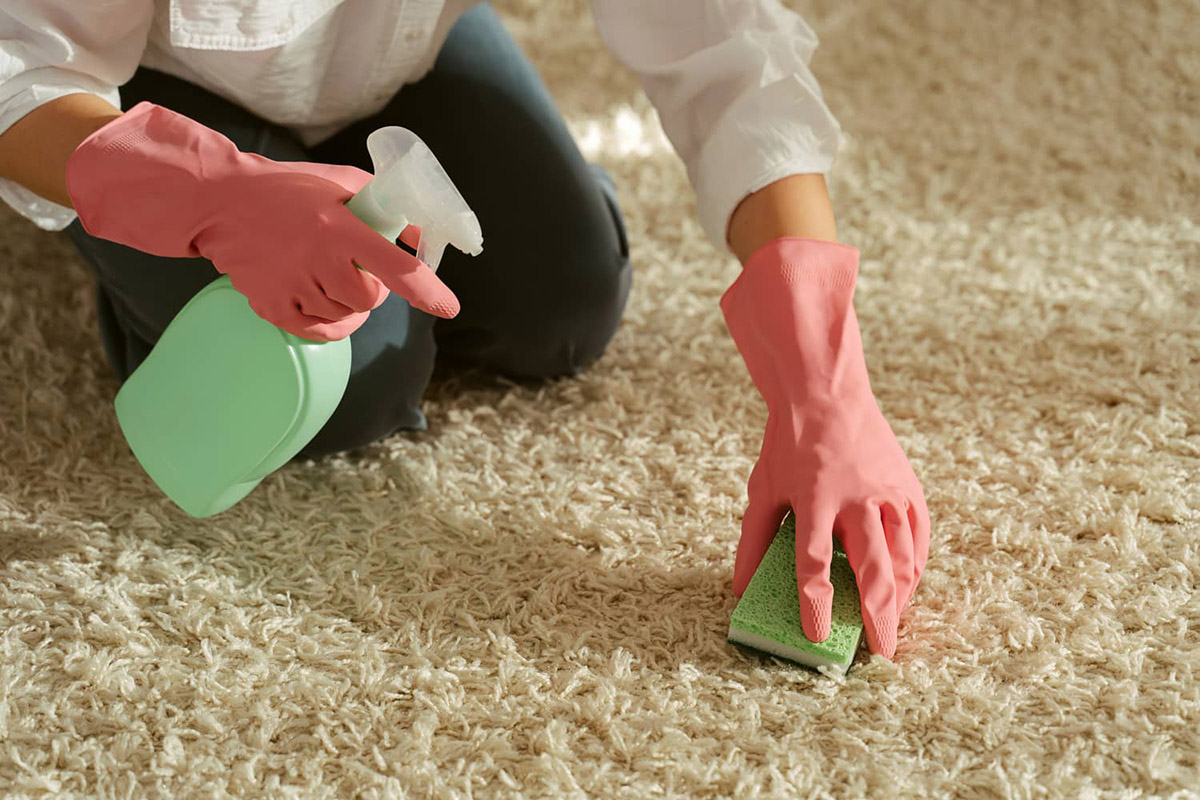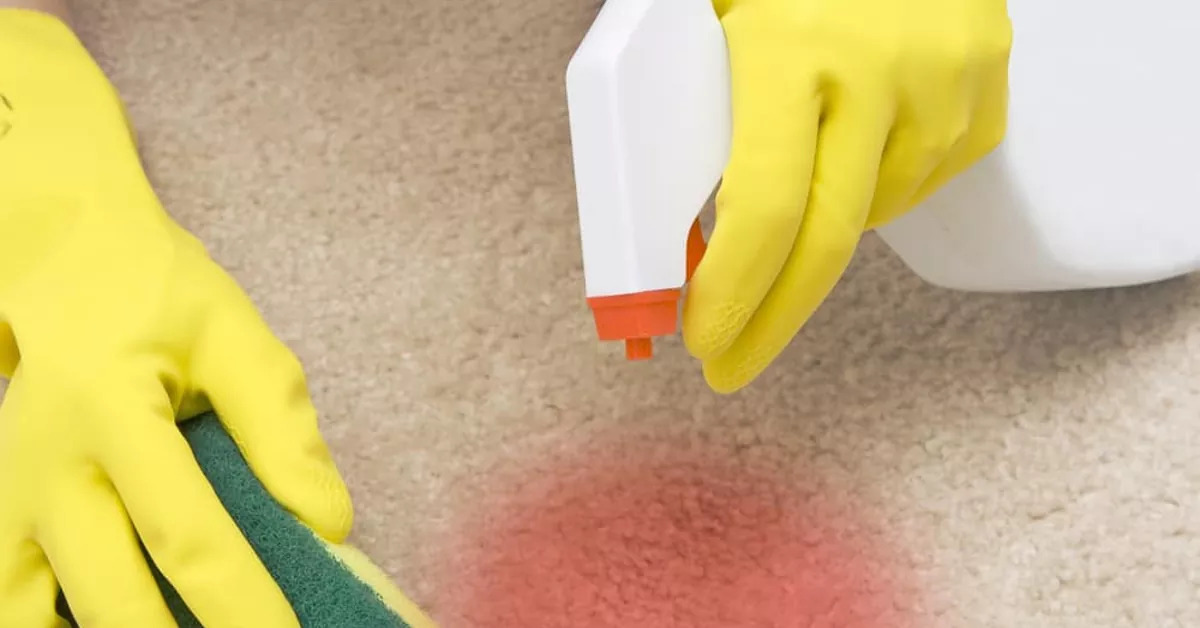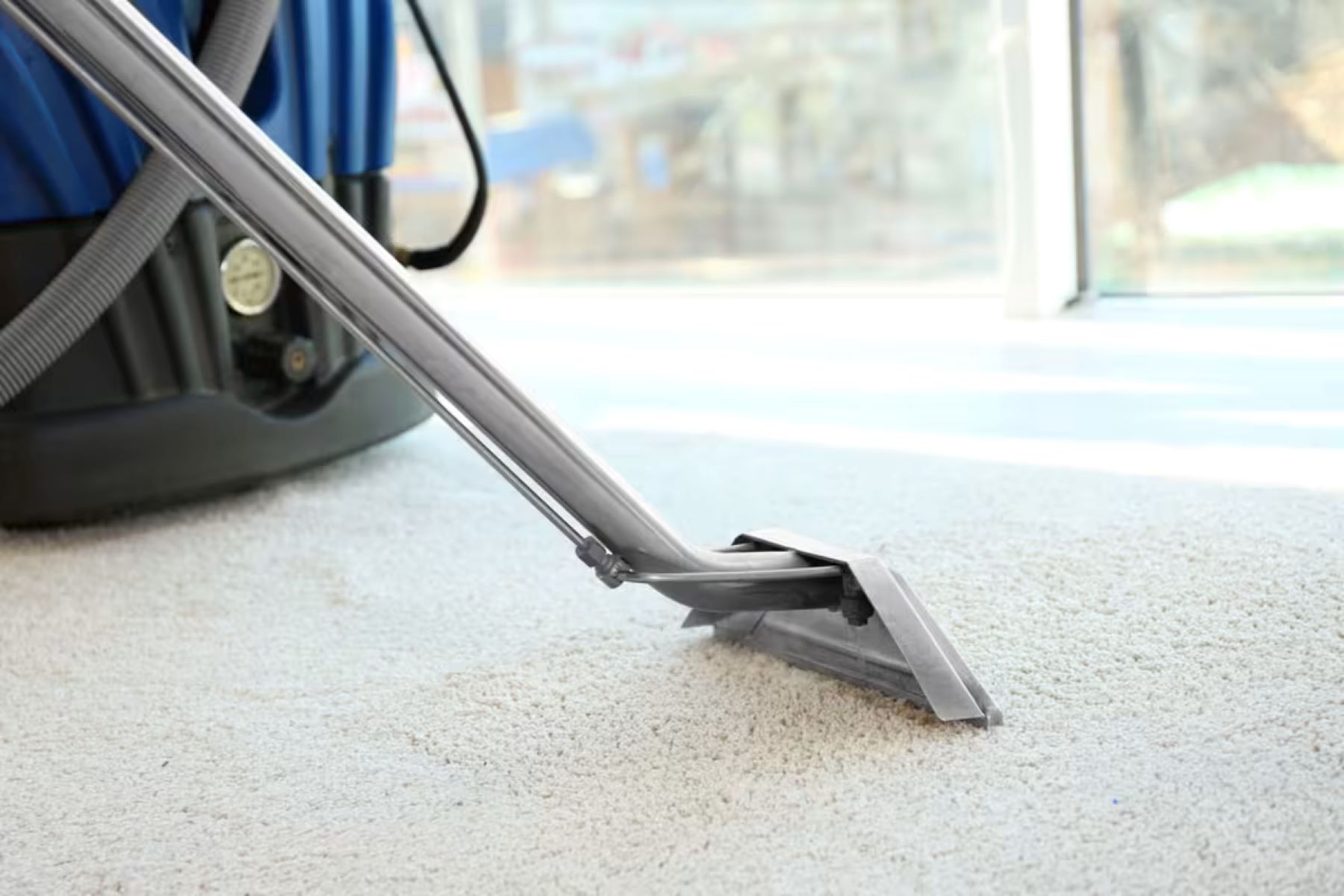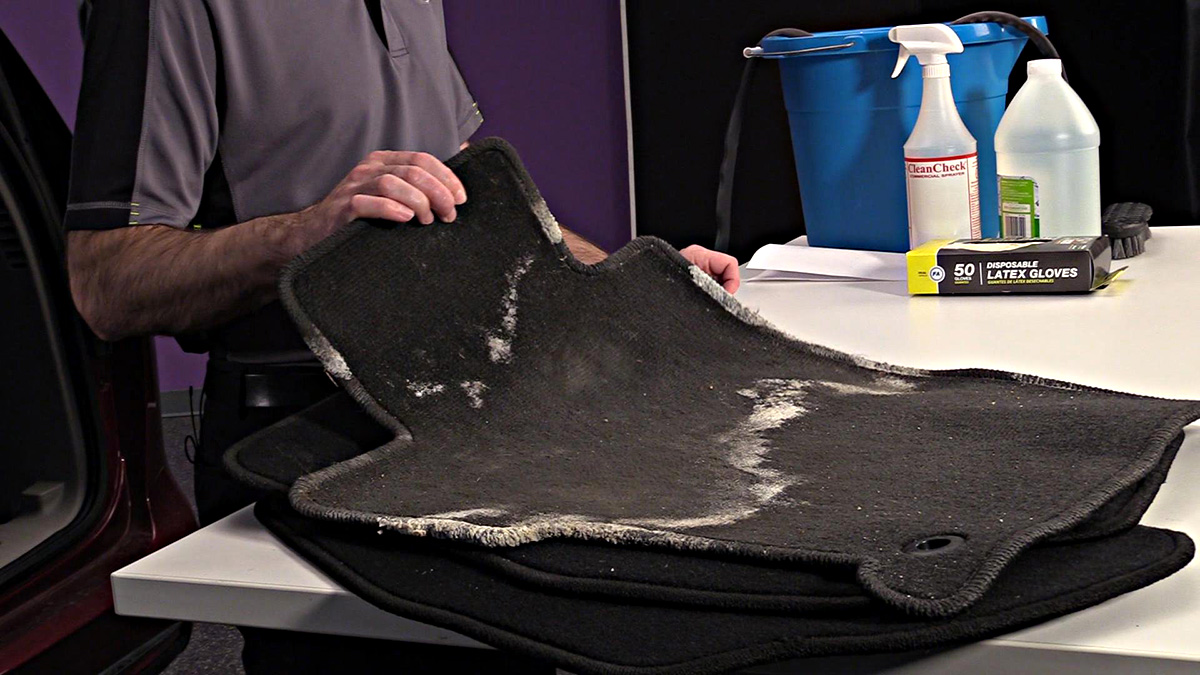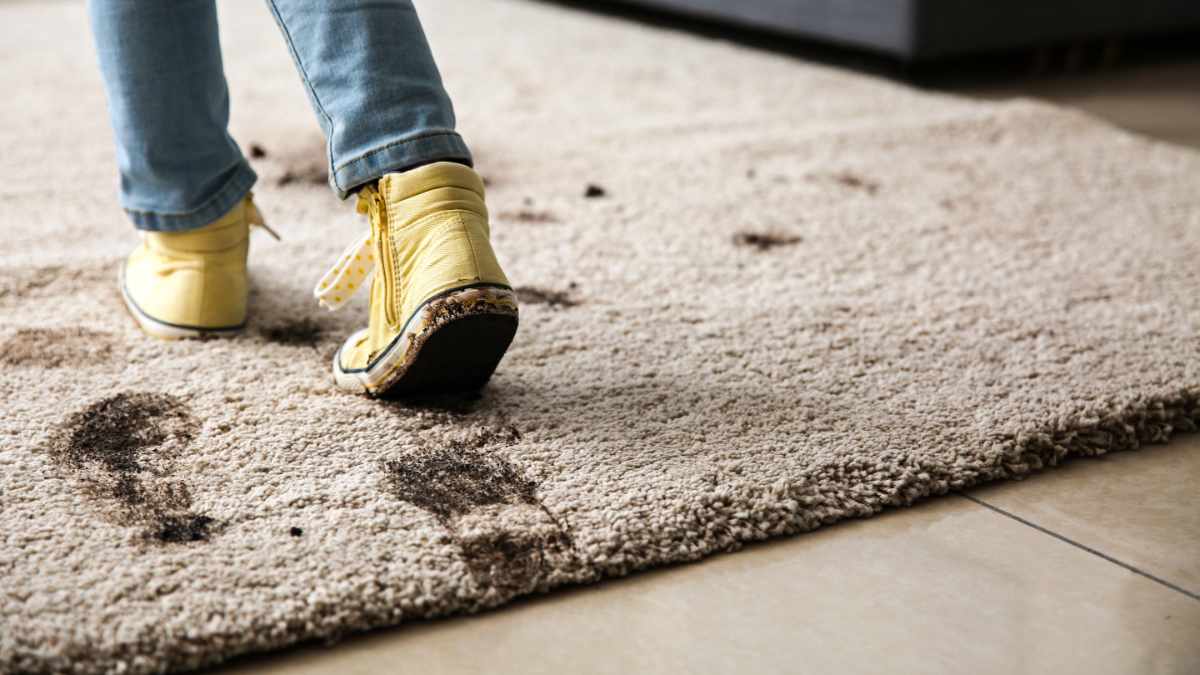

Articles
How To Remove Mud From A Carpet
Modified: October 28, 2024
Learn effective ways to remove mud stains from your carpet with these informative articles. Say goodbye to muddy carpets and keep your home looking clean and fresh.
(Many of the links in this article redirect to a specific reviewed product. Your purchase of these products through affiliate links helps to generate commission for Storables.com, at no extra cost. Learn more)
Introduction
Having mud tracked onto your carpet can be a frustrating and unsightly mess. Whether it’s from muddy shoes, pets, or kids at play, it’s important to address the issue promptly to prevent further staining and damage. In this article, we will guide you through the step-by-step process of removing mud from a carpet.
Before diving into the cleaning process, it’s important to note that the method you choose will depend on the type of carpet you have and the extent of the mud stains. It’s always recommended to test any cleaning solution on a small, inconspicuous area of the carpet before applying it to the entire stain.
Now, let’s get started and restore your carpet to its original clean and pristine condition!
Key Takeaways:
- Promptly allow mud to dry, then use gentle cleaning techniques and suitable solutions to effectively remove stains. Remember to rinse and dry the carpet thoroughly for a pristine finish.
- Gather necessary supplies, follow step-by-step instructions, and be patient to restore your carpet’s cleanliness. Prevent future stains with preventive measures and prompt action.
Read more: How To Get Mud Out Of A Carpet
Step 1: Gather the necessary supplies
Before tackling the mud stains on your carpet, it’s important to gather all the necessary supplies. Having everything ready will save you time and ensure a smoother cleaning process.
Here are the supplies you’ll need:
- Paper towels or clean white cloths: These will be used to blot the excess mud and absorb any liquid during the cleaning process.
- Vacuum cleaner: A vacuum cleaner with a brush attachment will help remove any loose dirt and debris before starting the cleaning process.
- Soft bristle brush: For scrubbing the mud stains gently. Make sure the brush is soft to avoid damaging the carpet fibers.
- Mild detergent or carpet cleaning solution: Look for a mild and non-bleaching detergent or a carpet cleaning solution specifically designed for removing stains. Avoid using harsh chemicals that can discolor or damage the carpet fibers.
- Bucket of warm water: Used for diluting the cleaning solution and rinsing the carpet.
- Clean sponge or cloth: For applying the cleaning solution and blotting the carpet.
- Fan or air mover: Optional but helpful for speeding up the drying process.
Once you have gathered all these supplies, you’re ready to proceed to the next step: allowing the mud to dry.
Step 2: Allow the mud to dry
Now that you have gathered all the necessary supplies, it’s time to allow the mud on your carpet to dry. This step is essential because trying to clean wet mud can spread it around and make the stain worse.
Here’s how you can proceed:
- Avoid stepping on the mud stain to prevent it from smearing and spreading.
- If the mud is still wet and muddy, gently scrape away any excess mud using a dull knife or spoon. Be careful not to push the mud deeper into the carpet fibers.
- Place paper towels or clean white cloths over the mud stain to absorb any moisture. Gently press down on the towels to soak up as much liquid as possible.
- Allow the mud to dry naturally. This can take several hours or overnight, depending on the amount of mud and the humidity in the air.
During this drying period, it’s important to avoid walking on the mud stain to prevent tracking it to other areas of the carpet.
Once the mud is completely dry, you can proceed to the next step: vacuuming the dried mud.
Step 3: Vacuum the dried mud
After allowing the mud to dry thoroughly, it’s time to remove the dried mud from your carpet using a vacuum cleaner. Vacuuming will help eliminate loose dirt and debris, making the subsequent cleaning steps more effective.
Follow these steps to vacuum the dried mud:
- Attach the brush attachment to your vacuum cleaner. The brush attachment is ideal for agitating the carpet fibers and loosening the dried mud.
- Start by gently vacuuming the edges of the mud stain, working your way towards the center.
- Move the vacuum cleaner back and forth over the dried mud to dislodge any particles. Be careful not to press too hard to avoid damaging the carpet fibers.
- If the mud stain is particularly stubborn, you can make short, gentle strokes with the vacuum cleaner to help break up the dried mud.
- Continue vacuuming the entire area thoroughly to ensure you remove as much loose dirt and debris as possible.
- Empty the vacuum cleaner bag or canister to prevent dirt from being redistributed onto the carpet.
Vacuuming the dried mud will help remove the bulk of the stain, but it may not eliminate all traces. That’s why it’s important to proceed with the next steps to treat any remaining mud stains on your carpet.
Next, we’ll move on to Step 4: mixing a cleaning solution.
Step 4: Mix a cleaning solution
Now that you have vacuumed the dried mud from your carpet, it’s time to prepare a cleaning solution to tackle any remaining stains. The type of cleaning solution you use will depend on your carpet’s material and the severity of the mud stains.
Follow these steps to mix a suitable cleaning solution:
- Check the manufacturer’s recommendations for your carpet regarding cleaning agents. Some carpets may require specific cleaning solutions or have restrictions on the types of products that can be used.
- If you’re unsure about the appropriate cleaning solution, you can create a homemade solution by mixing mild dish detergent with warm water. Use about 1 tablespoon of detergent for every 2 cups of water. Alternatively, you can use a commercial carpet cleaning solution that is safe for your carpet type.
- Pour the cleaning solution into a bucket and add warm water to dilute it. Make sure the water is not too hot to avoid damaging the carpet fibers.
- Gently stir the solution to ensure the detergent or cleaning product is fully mixed with the water. Avoid creating too many suds as excessive foam can be difficult to rinse out.
Once you have mixed the cleaning solution, you’re ready to move on to the next step: applying the solution to the carpet.
Read more: How To Remove Ash From A Carpet
Step 5: Apply the cleaning solution to the carpet
With your cleaning solution prepared, it’s time to apply it to the mud stains on your carpet. This step will help break down the remaining mud and lift the stains from the carpet fibers.
Here’s how you can apply the cleaning solution:
- Dip a clean sponge or cloth into the cleaning solution. Make sure it is saturated but not dripping.
- Gently blot the mud stains with the sponge or cloth, starting from the outer edges and working your way towards the center. Avoid rubbing or scrubbing vigorously, as this can damage the carpet fibers.
- Continue blotting the stains until you see them starting to lift. You may need to reapply the cleaning solution to stubborn stains or allow it to sit on the stain for a few minutes before blotting again.
- Be patient and persistent, especially with deep or set-in mud stains. It may take several rounds of blotting to completely remove the stains.
- As you work, periodically rinse the sponge or cloth with clean water to remove any mud residue or detergent buildup. This will prevent cross-contamination and ensure effective stain removal.
Remember to work gently and avoid scrubbing, as this can fray the carpet fibers or cause the stains to spread. Take your time and repeat the process as necessary until the mud stains are visibly diminished.
Once you have successfully treated the mud stains, it’s time to move on to Step 6: scrubbing the mud stains gently.
Blot the mud with a clean cloth to remove excess, then mix 1 tsp dish soap with 1 cup warm water. Dab the solution onto the stain and blot with a clean cloth. Repeat until the mud is gone.
Step 6: Scrub the mud stains gently
After applying the cleaning solution and blotting the mud stains, it’s time to gently scrub the remaining stains to help lift them from the carpet fibers. This step requires caution to avoid damaging the carpet, so it’s important to follow these guidelines:
- Take a soft-bristle brush or a clean cloth and moisten it with the cleaning solution.
- Gently scrub the mud stains using circular motions. Start from the outer edges and work your way towards the center.
- Apply light pressure and be careful not to scrub too vigorously, as this can damage the carpet fibers or spread the stains further.
- Continue scrubbing the stains until you notice them gradually fading. Be patient, as deep or set-in stains may require multiple scrubbing sessions.
- Regularly rinse the brush or cloth with clean water to remove any dirt or residue. This will prevent cross-contamination and ensure effective stain removal.
- As you scrub, periodically blot the area with a clean cloth or paper towels to absorb any loosened dirt and moisture.
Remember, the goal is to be thorough but gentle. This will help avoid causing any additional damage to your carpet while effectively removing the mud stains.
Once you are satisfied with the results and the stains are significantly diminished, it’s time to proceed to Step 7: rinsing the carpet with clean water.
Step 7: Rinse the carpet with clean water
After scrubbing the mud stains gently, it’s important to rinse the carpet with clean water to remove any remaining cleaning solution and residual dirt. This step will help ensure that no soapy residue is left behind, which can attract more dirt and cause the carpet to become dirty again.
Follow these steps to properly rinse your carpet:
- Fill a clean bucket with warm water. The water should be at a comfortable temperature, but not too hot.
- Dip a clean sponge or cloth into the bucket of water and wring out any excess liquid. You want the sponge or cloth to be damp but not dripping.
- Gently blot the area where you applied the cleaning solution. This will help remove any remaining detergent or dirt from the carpet fibers.
- Continue blotting the area with the damp sponge or cloth until you no longer see any soapy residue being lifted from the carpet.
- As you work, periodically rinse the sponge or cloth in the clean water to remove any dirt or detergent buildup. This will ensure effective rinsing and prevent recontamination of the carpet.
- Once you have thoroughly rinsed the carpet, use clean paper towels or a dry cloth to blot the area and absorb any excess moisture.
It’s important to remember not to oversaturate the carpet with water during this step, as excessive moisture can result in longer drying times and potential damage to the carpet.
With the carpet properly rinsed, it’s time to move on to Step 8: absorbing excess moisture.
Step 8: Absorb excess moisture
After rinsing your carpet, it’s important to absorb any excess moisture to facilitate the drying process. Leaving your carpet overly wet can not only prolong the drying time but also create a breeding ground for mold and mildew.
Follow these steps to effectively absorb excess moisture from your carpet:
- Place clean, dry towels or paper towels over the wet area.
- Gently press down on the towels to absorb the moisture. Avoid rubbing or scrubbing, as this can push the moisture further into the carpet fibers.
- If necessary, replace the towels with dry ones and continue blotting until no more moisture is being absorbed.
- For larger areas or more extensive moisture, you can also use a wet-dry vacuum to extract the excess water. Follow the manufacturer’s instructions for using the vacuum on wet surfaces.
Be sure to check the towels periodically and replace them as they become saturated. The goal is to remove as much moisture as possible to ensure a quicker drying process.
Once you have absorbed the excess moisture, it’s time to allow the carpet to dry completely, which brings us to Step 9.
Read more: How To Remove Gum From The Carpet
Step 9: Allow the carpet to dry completely
After absorbing the excess moisture from your carpet, it’s crucial to allow it to dry completely before resuming regular use. Drying the carpet properly will prevent the growth of mold and mildew and ensure that the mud stains are fully removed.
Follow these steps to facilitate the drying process:
- Avoid walking on the damp carpet to prevent tracking dirt or causing further staining.
- Open windows and doors to allow for proper ventilation and air circulation. This will help expedite the drying process.
- If possible, use fans, air movers, or dehumidifiers to increase airflow and speed up drying. Direct the airflow towards the damp areas of the carpet.
- Avoid placing heavy furniture or objects on the damp carpet, as this can inhibit airflow and prolong drying time.
- Monitor the carpet periodically to check for any remaining moisture. If you notice any dampness or lingering moisture, continue the drying process until the carpet is completely dry.
- Depending on the humidity levels and the extent of the cleaning, the drying process may take anywhere from a few hours to a day or longer. Patience is key to ensure the best results.
Once the carpet is fully dry to the touch, it’s time to move on to the final step: vacuuming the carpet again to remove any remaining debris or dirt that may have accumulated during the drying process.
Step 10: Vacuum the carpet again
After allowing your carpet to dry completely, it’s important to vacuum it again to remove any remaining debris, dirt, or loose fibers. This final step will help restore the carpet’s appearance and ensure that it is thoroughly clean.
Follow these steps to vacuum your carpet one more time:
- Attach the brush attachment to your vacuum cleaner.
- Start from one end of the room and systematically vacuum the entire area, overlapping your strokes to ensure thorough coverage.
- Pay special attention to the previously stained areas, as they may still have some lingering particles.
- If you notice any stubborn debris, use a handheld vacuum or attachments to target specific spots.
- Work slowly and methodically to ensure that the vacuum cleaner effectively picks up any remaining dirt and debris.
- Once you have vacuumed the entire carpet, empty the vacuum cleaner bag or canister and properly dispose of the collected debris.
Vacuuming the carpet after it has dried not only helps remove any remaining dirt but also fluffs up the carpet fibers, giving it a refreshed and clean appearance.
Congratulations! You have successfully removed mud stains from your carpet. With these steps, you can restore your carpet to its original cleanliness and beauty.
Remember to promptly address any future mud stains to prevent them from setting in and becoming more challenging to remove. By acting quickly and following these steps, you can maintain a clean and spot-free carpet for years to come.
We hope this guide has been helpful, and thank you for reading!
Conclusion
Removing mud stains from your carpet can be a daunting task, but with the right approach and techniques, it is possible to restore your carpet to its original cleanliness. By following the step-by-step process outlined in this guide, you can effectively remove mud stains and prevent further damage to your carpet.
Throughout the process, it’s important to gather the necessary supplies, allow the mud to dry, vacuum the dried mud, mix a suitable cleaning solution, and apply it to the carpet using blotting and gentle scrubbing techniques. Rinsing the carpet with clean water and absorbing excess moisture are crucial steps to ensure a thorough cleaning and prevent any residue from remaining. Finally, allowing the carpet to dry completely and vacuuming it again will provide the finishing touches to achieve a clean and refreshed appearance.
Remember, different carpet materials and stains may require specific cleaning methods, so it’s always a good idea to consult the manufacturer’s recommendations or seek professional assistance if you are unsure about any aspect of the cleaning process.
By promptly addressing mud stains and implementing preventive measures like door mats or removing shoes before entering the house, you can reduce the likelihood of future stains and keep your carpet looking its best for years to come.
We hope this comprehensive guide has provided you with the knowledge and confidence to tackle mud stains on your carpet successfully. With patience, the right tools, and the techniques shared here, you can maintain a clean and pristine carpet that adds beauty and comfort to your home.
Thank you for reading, and happy cleaning!
Frequently Asked Questions about How To Remove Mud From A Carpet
Was this page helpful?
At Storables.com, we guarantee accurate and reliable information. Our content, validated by Expert Board Contributors, is crafted following stringent Editorial Policies. We're committed to providing you with well-researched, expert-backed insights for all your informational needs.
